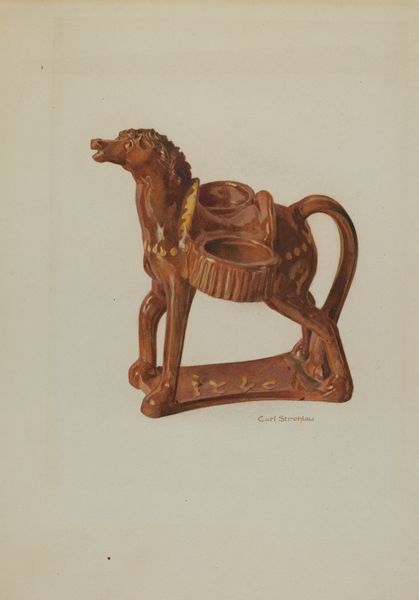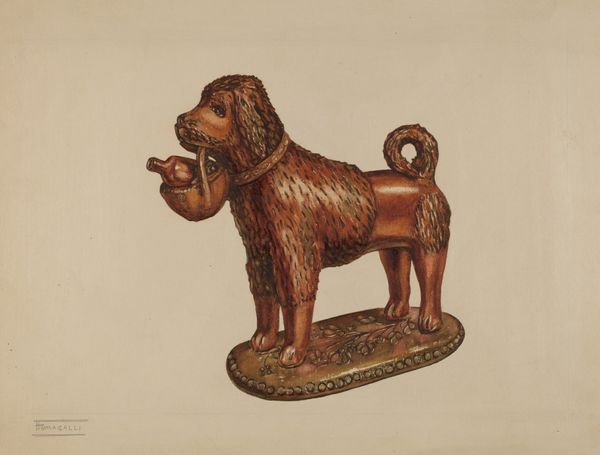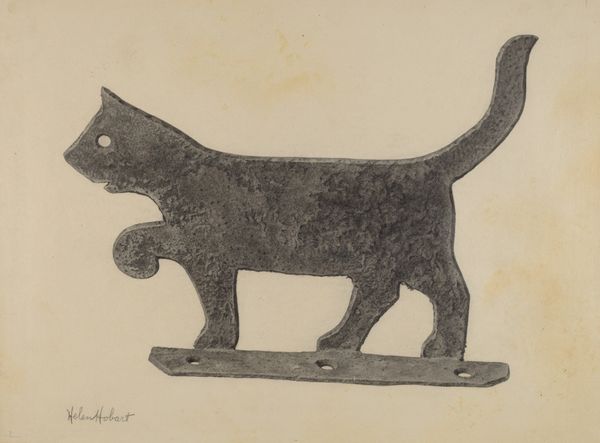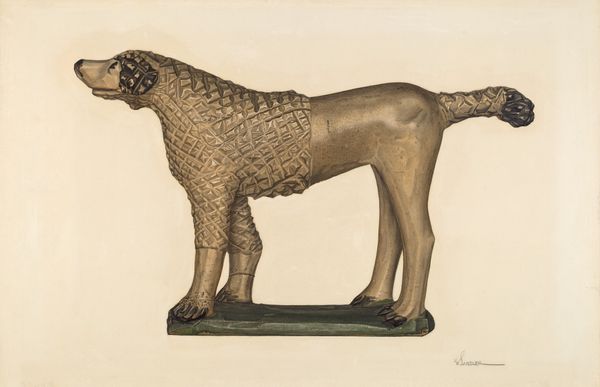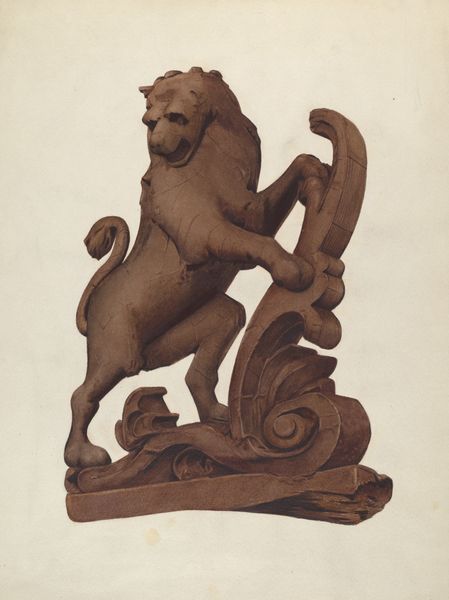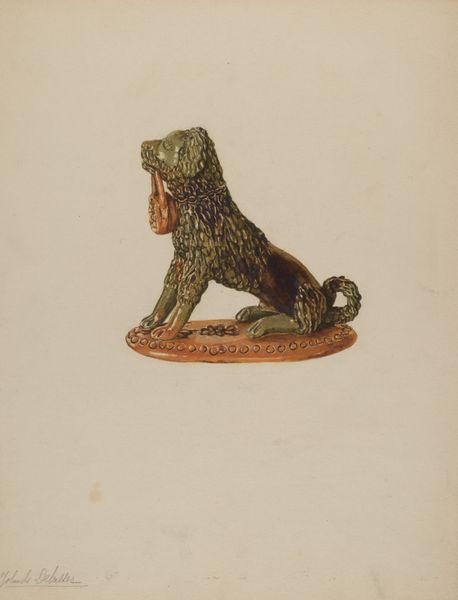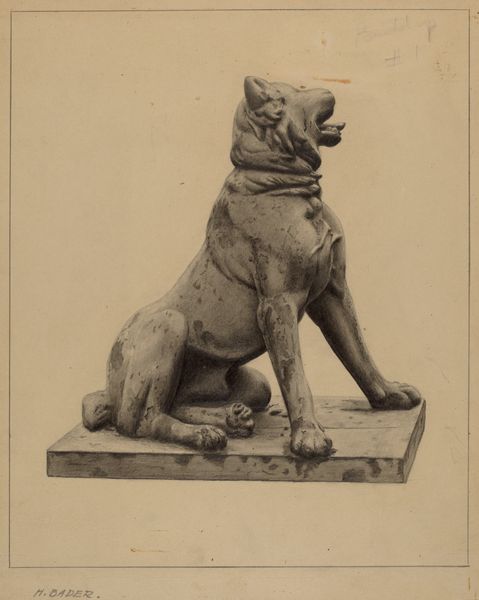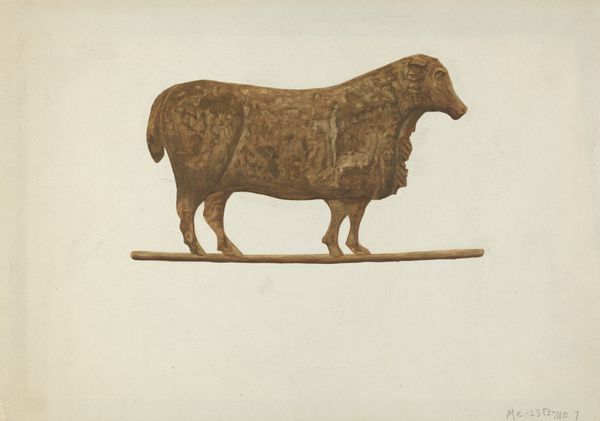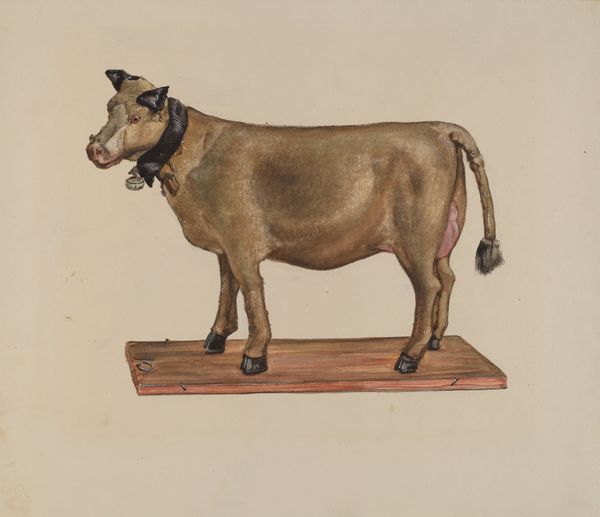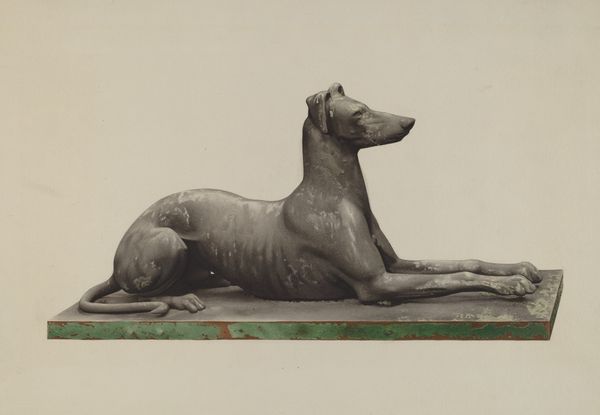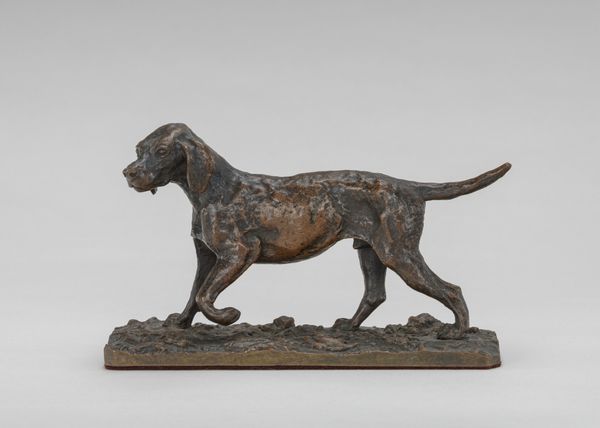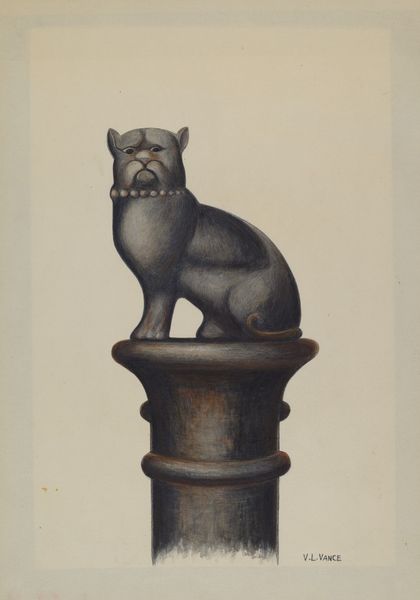
drawing, charcoal
#
drawing
#
charcoal drawing
#
folk-art
#
charcoal
#
realism
Dimensions: overall: 24.6 x 35.7 cm (9 11/16 x 14 1/16 in.) Original IAD Object: 13 1/4" long; 5 1/4" high
Copyright: National Gallery of Art: CC0 1.0
Editor: So, here we have Gerald Transpota's charcoal drawing, "Nutcracker: Dog Tray," created around 1940. It depicts, well, a dog-shaped nutcracker. It's kind of charming in a folksy way, but also… utilitarian. What stands out to you? Curator: It’s interesting how Transpota represents a manufactured object – a cast iron nutcracker – using traditional drawing media. It begs the question: why depict a mass-produced item with such meticulous handcraft? Think about the social context, too. This was made during a time when mass production was increasingly prevalent. Is the artist perhaps commenting on the changing landscape of labor, the tension between handcraft and industry? Editor: That's a really interesting angle I hadn't considered. So, the choice of medium itself becomes a statement? Curator: Exactly. Charcoal, traditionally associated with preparatory sketches and "high art," is here used to meticulously render a common household object. This juxtaposition challenges the established hierarchies between art and craft, prompting us to question the value we place on each. Look at the base— it proudly announces the tool’s function: "DOG. K. NUTE CRACKER." What does that straightforward declaration tell us about the relationship between form and function? Editor: I see your point. It's like the drawing insists we acknowledge the object’s intended use, its role within a specific economy and domestic sphere. Were nutcrackers like this common? Curator: Possibly, yes. Understanding their popularity could further reveal Transpota's social commentary. Was he celebrating a particular type of ingenuity, lamenting a bygone era of craftsmanship, or perhaps even subtly critiquing the rise of consumer culture? Editor: It's fascinating how a seemingly simple drawing of a nutcracker can open up so many avenues of interpretation. It’s much more than just a picture. I’ll definitely look at folk art with a fresh perspective now. Curator: Indeed! By examining the materials, production process, and social context, we can gain a deeper appreciation for the complexities embedded within everyday objects, and art which chooses them as its subject.
Comments
No comments
Be the first to comment and join the conversation on the ultimate creative platform.

